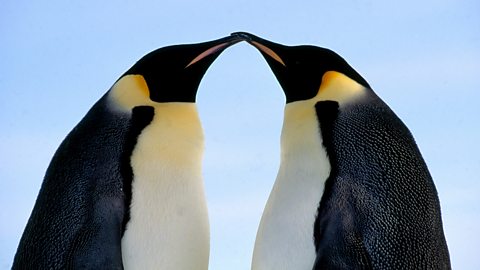Example of adaptations
Emperor penguin

The Emperor Penguin lives in the Antarctic environment which is very cold. The ground is covered in ice and snow and food is only available in the sea.
Behavioural adaptations
Emperor penguins breed during the winter so that their offspring reach independence in summer when more food is available.
Adult male penguins huddle together during winter. This helps them to avoid heat loss and survive until spring.
Physiological adaptations
Males can go without food for around 100 days. This allows them to survive during winter when no food is available.
A penguinÔÇÖs resting heart rate can slow down greatly during a dive so that it can conserve oxygen underwater and spend more time finding food.
Structural adaptations
Penguins have a short stiff tail. They can lean backwards and balance on their heels and their tail. This reduces heat loss from their feet to the ground.
The colour of a penguinÔÇÖs body helps to camouflage it when it is swimming. From above, its dark back blends in against the sea and from below, its light front blends in against the sky.